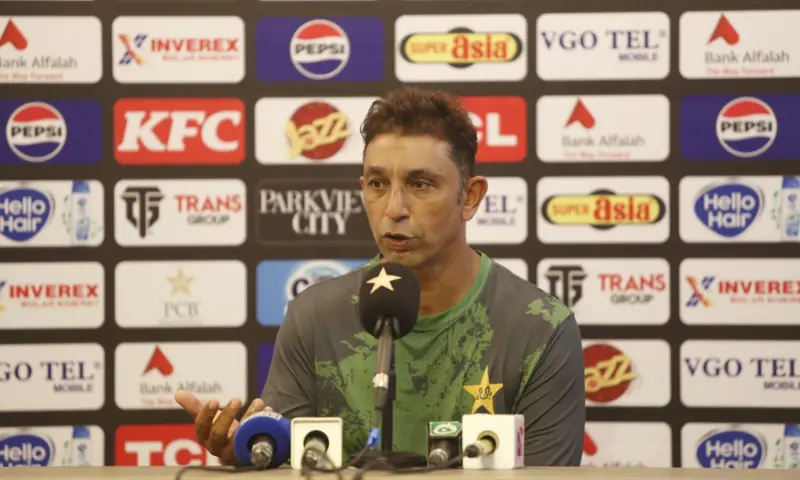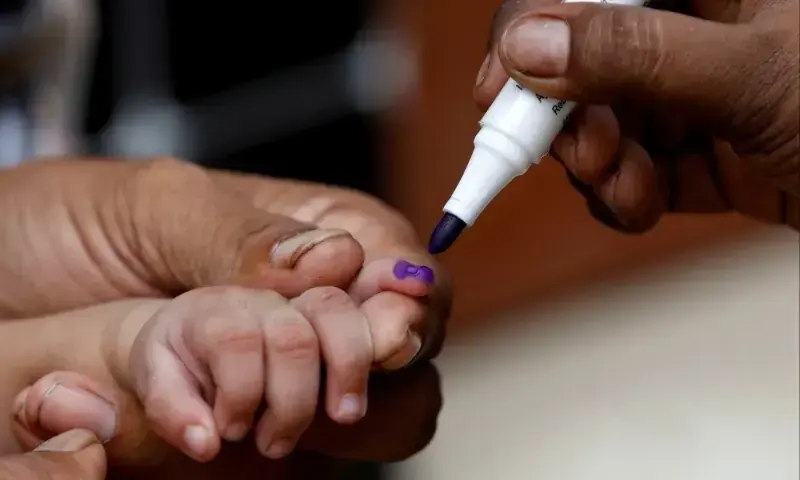• Data from the Health Department suggests that all is well when it comes to dengue in Sindh, with only 819 confirmed cases.
• Figures obtained from four hospitals in Karachi show 2,972 positive cases reported from September 1 to October 16.
• A public sector laboratory in Hyderabad confirms 9,075 dengue cases between September 1 and October 14.
• The government says 215,270 cases of malaria were also reported this year in the province
KARACHI/HYDERABAD: While the provincial health department puts the total number of dengue cases in Sindh this year at 819, figures obtained by three major hospitals in Karachi and a public sector laboratory and its branches in Hyderabad suggest an outbreak-like situation, with the actual number crossing 12,000 in a short span of just six weeks.
The government had confirmed one dengue-related death in July, but independent figures suggest that four dengue patients in Hyderabad (a girl, two men and an elderly woman) and two in Karachi had lost their lives after testing positive for the mosquito-borne disease.
While the government remained mum on the huge data discrepancy, a senior Pakistan Medical Association (PMA) official raised doubts over the credibility of the official figures, saying its statistics did not represent the reality on the ground.
Gloomy situation in Karachi, Hyderabad
According to official figures released by the director general of health services, the total number of confirmed dengue cases in Karachi division and Hyderabad district this year were 579 and 119, respectively.
However, figures collected from three hospitals in Karachi – Indus Hospital (IH), Liaquat National Hospital (LNH) and Sindh Infectious Diseases Hospital and Research Center (SIDHRC) – showed that a total of 2,972 dengue cases have been reported from September 1 to October 16. The fourth hospital alone, Jinnah Postgraduate Medical Centre, recorded 1,062 dengue cases from July to date.
The situation is no different at the Aga Khan University Hospital (AKUH) as sources confirmed a high number of dengue cases, comparatively higher than last year, and some deaths.
Hyderabad is facing an alarming situation as figures obtained from the Diagnostic and Research Laboratory (DRL) of Liaquat University of Medical and Health Sciences (LUMHS) Jamshoro and its branches showed 9,075 confirmed cases of dengue between September 1 and October 14.
Question mark over credibility of government data
PMA-Sindh President Dr Bashir Ahmed Khaskheli described the situation as much more serious than what the official data shows and said that the official figures do not represent the reality on the ground.
“There is no official mechanism to obtain information from private clinics operating in every corner of a locality, as well as from private hospitals, quacks and even hakeems. Many people, limited by their financial resources, do not even choose to undergo laboratory tests,” he said. Sunrise.
Dr Faisal Mahmood, professor of infectious diseases and associate medical director at AKUH, also confirmed the rise in dengue cases and emphasized that late October was traditionally the season when most dengue cases were observed.
talking to SunriseHe said: “It’s important to note that dengue rates vary from year to year, and this cyclical pattern of dengue spikes is something we’ve seen over the last decade or so. There are several reasons for this, including weather patterns and changes in strains. It’s hard to say what’s driving this year, although I think [rains] “The floods have had an influence.”
Dr. Mahmood avoided commenting on the severity of the disease, pointing out that the city was in the middle of (dengue) season.
Professor Dr Imran Shaikh, senior doctor and dean of medicine at LUMHS, said, “We had cases in June and July, but no one tracked them. The load of positive cases has increased tremendously since September. It is still not showing a downward trend.”
Alarming increase in malaria cases
According to data from the health department, 215,270 cases of malaria have been reported across the province this year and the number of cases reported in Karachi from January 1 to October 15 stands at 3,072.
Official data shows that the cities most affected by malaria are: Jamshoro 22,293, Larkana 19,835, followed by Jacobabad 17,170, Badin 19,478, Mirpurkhas 12,699, Shaheed Benazirabad 12,467, Thatta 10,995, Tando Muhammad Khan 10,579, Khairpur. 9,967, Sanghar 7,409, Hyderabad 7,054, Tando Allah Yar 6,702, Matiari 6,064, Shikarpur 6,875, Tharparkar 4,297, Kashmore 4,292, Qambar Shahdadkot 3,866, Sukkur 4,187, Naushehro Feroze 3,563, Ghotki 2,867 and Umerkot 2,327.
However, the information collected from different public and private sector hospitals contradicted the official data.
Figures compiled from Indus Hospital, SIDHRC, LNH and JPMC showed that more than 1,800 cases of malaria had been reported in the city between September 1 and October 16.
According to Dr Faisal Mahmood of AKUH, malaria has moved forward by at least a month this year.
Ineffective fumigation
Health experts have attributed the rise in dengue cases to lack of fumigation and timely drainage of accumulated water after heavy spells of monsoon rains.
“If rainwater remains accumulated, it has the potential to become a breeding ground for vectors,” said Dr Mirza Ali Azhar of the PMA. “Not all rainwater goes to the drains and in many areas the water accumulates in the form of ponds, only to serve as a home for mosquitoes,” he said.
Dr Khaskheli, working president of PMA-Sindh, regretted that the high number of cases due to mosquito-borne diseases could be easily prevented through effective vector control measures.
“It all has to do with poor sewage and drainage system. You could see puddles of stagnant rainwater or sewage and piles of garbage everywhere, providing breeding grounds for all kinds of germs and insects,” he said, pointing out that there were few government fumigation campaigns to effectively address the menace of vector-borne diseases.
The campaign against dengue intensifies: minister
There was no response from the health department when its spokesperson was contacted to explain the large discrepancy in the data, suggesting that the actual numbers of dengue and malaria cases would be much higher.
However, Sindh Health Minister Dr Azra Pechuho urged the general public to take possession of their localities and ensure that there are no stagnant water pools.
“The government is taking comprehensive measures to curb the spread of the disease. Anti-dengue drives have been intensified in all divisions including Karachi where fumigation and fumigation operations are being carried out daily. Hospitals have been directed to provide special medical care and immediate treatment to dengue patients,” he said in a statement.
He added that the health department teams were closely monitoring suspected and confirmed cases in all districts and were jointly working with district administrations to take immediate preventive and corrective measures.
Published in Dawn, October 19, 2025








